Master plan for innovative agri-food hub
Site Introduction
In Singapore’s Master Plan 2019, the Urban Redevelopment Authority (URA) envisioned a Northern Agri-Tech and Food Corridor, extending from the farms in Lim Chu Kang in the northeastern part of the island. In 2022, the Singapore Food Agency announced plans to develop approximately 390 hectares of Lim Chu Kang’s farmlands into a core agri-food hub (LCK AFH) starting in 2024. This initiative is a key part of Singapore’s “30 by 30” vision, which aims to produce 30% of the country’s nutritional needs locally by 2030. The development of Lim Chu Kang and the agri-food hub requires a bold vision and resourcefulness, underpinned by a comprehensive understanding of the region and the agri-food industry within Singapore’s unique context.
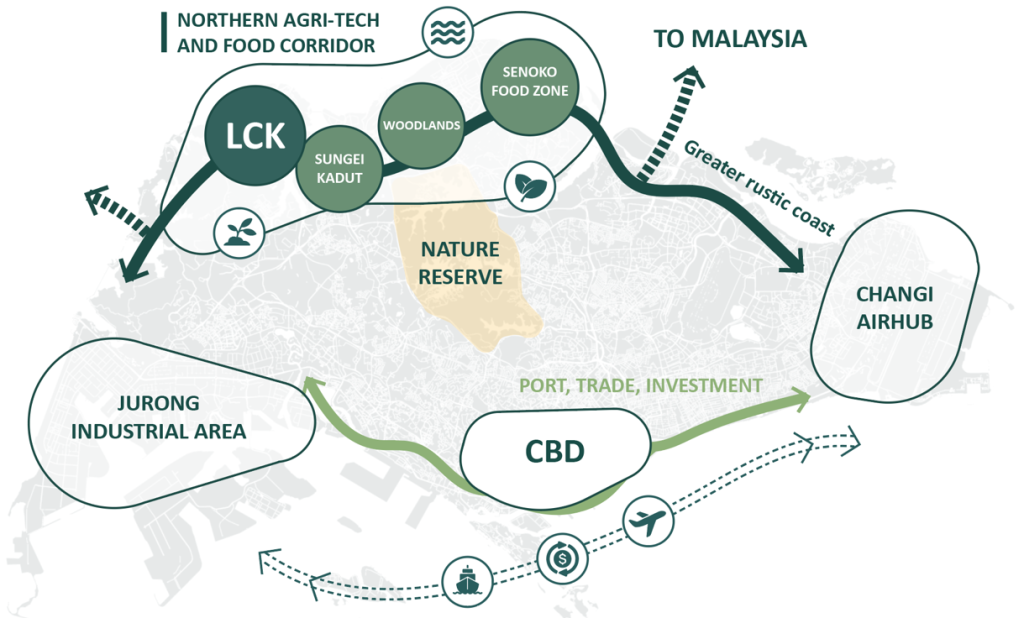
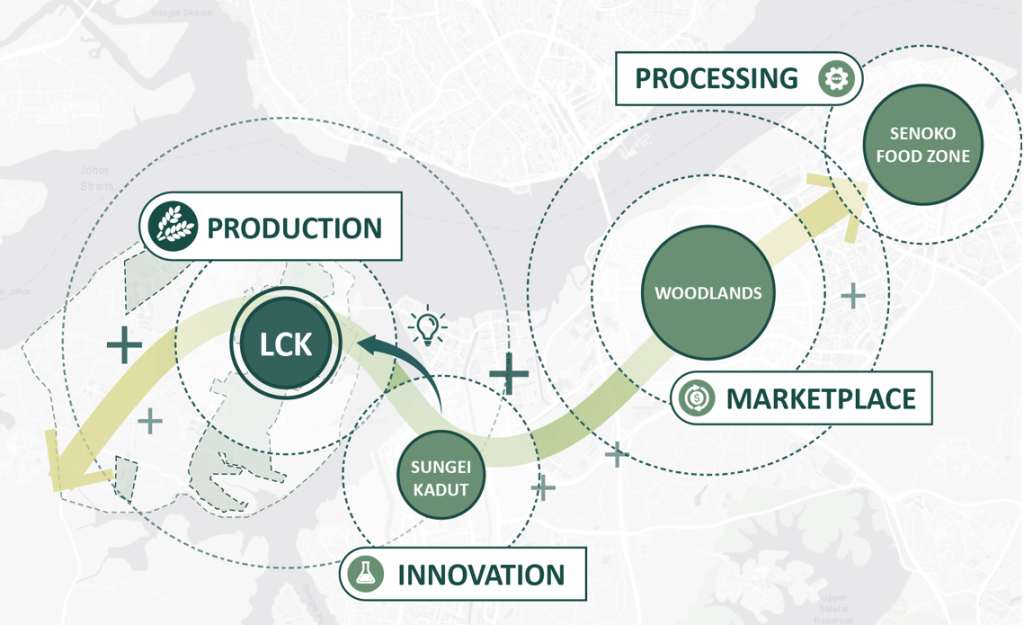
At the regional scale, we identified Lim Chu Kang (LCK) as the primary food production site, strategically located within the food corridor. This corridor already includes a food innovation hub at Sungei Kadut, a processing hub at Senoko Food Zone, and Woodlands as the primary distribution and marketplace.
Vision
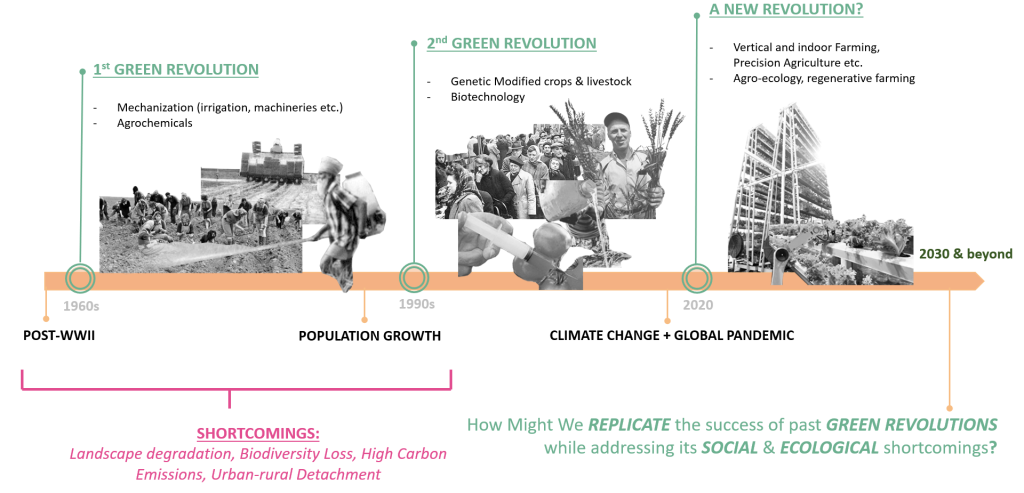
We look back at the history of agriculture to understand agro-innovation, including its successes and shortcomings. After World War II, there was a pressing need to feed the growing global population. In the 1960s, the first Green Revolution emerged, introducing mechanized farming practices, agrochemicals, and fertilizers. While agro-tech innovations led to high-yield crops, they also had negative impacts on the environment, increased inequalities, and created a disconnect from food.
Today, the crises of climate change and the COVID-19 pandemic necessitate a new revolution in agriculture. Technology alone is not enough to address these challenges. How can we replicate the successes of past Green Revolutions while addressing their social and ecological shortcomings?
We envision Lim Chu Kang to become the Frontier & Global Model
for the new Agro-Revolution by building Resiliency
towards Food Security, Climate Justice & Social Change
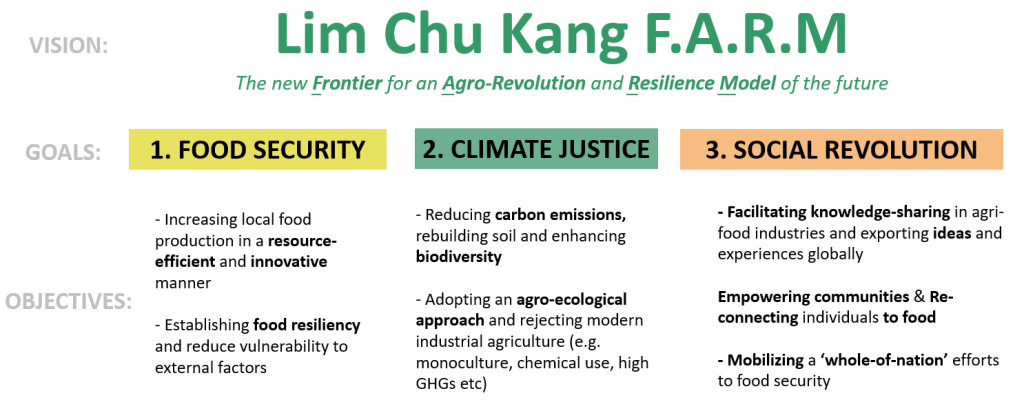
Master plan
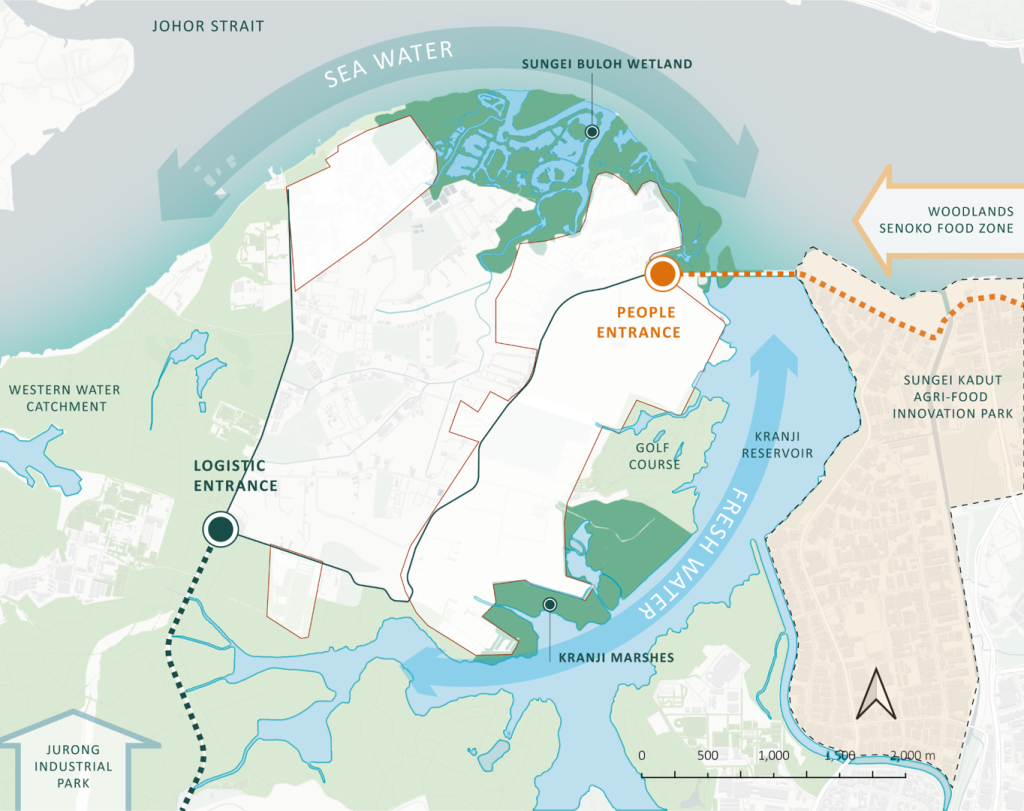
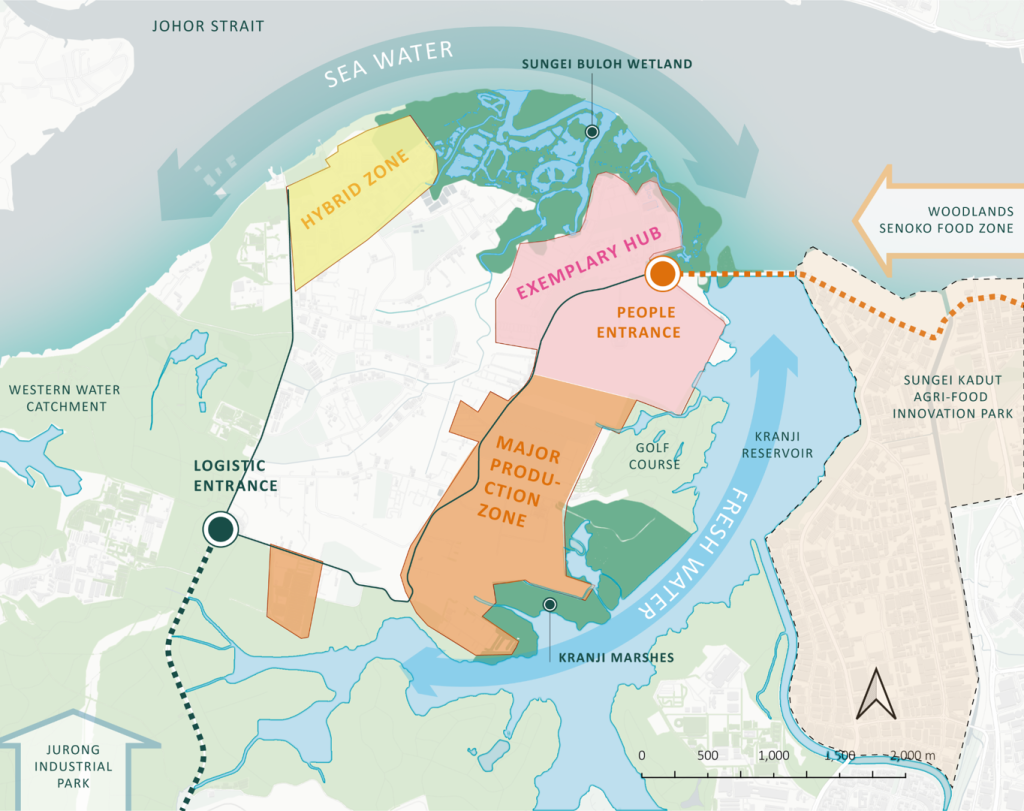
The diagram on the left illustrates the interplay between natural resources and human movement within the site. It highlights the presence of sea and freshwater bodies, as well as eco-sensitive wetlands. Regarding human mobility, the site is designed with separate entrances for people and logistics. This layout informs our approach of dividing the site into three clusters, each maximizing its economic, social, and ecological potential.
Cluster 1 is envisioned as an exemplary hub, attracting workers and researchers; Cluster 2 is designated as a major production zone, strategically located near the logistics entrance to minimize ecological impact; Cluster 3 is conceptualized as a hybrid work-life zone, offering an isolated setting while also being eco-sensitive.
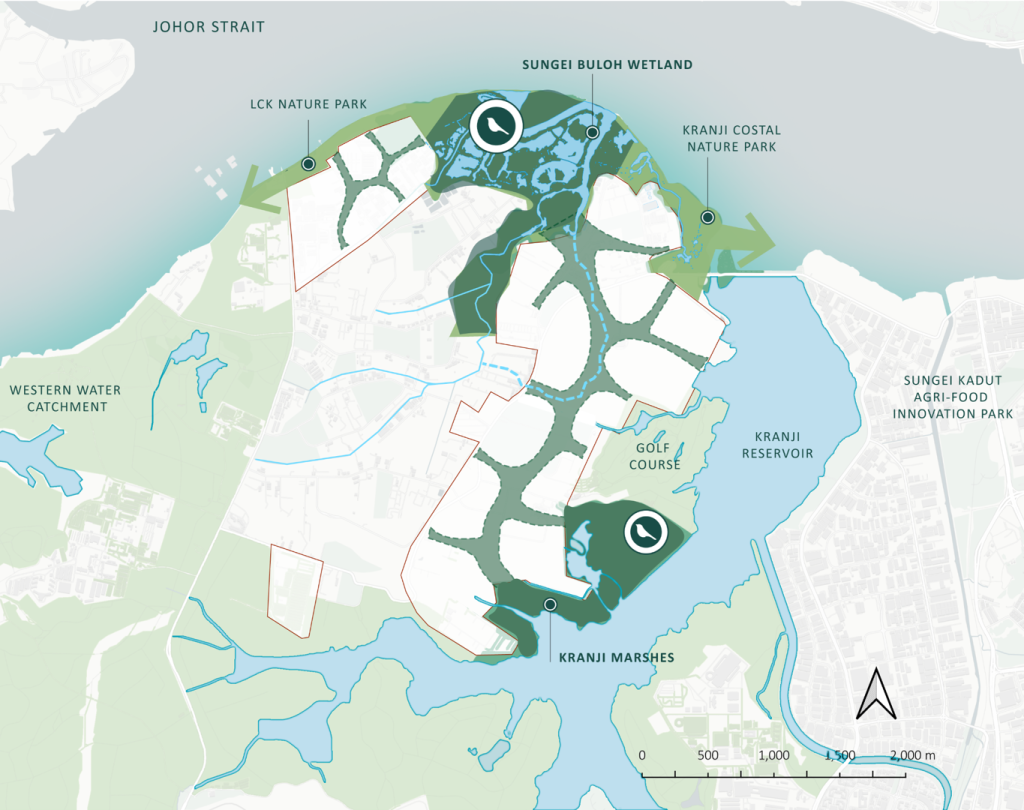
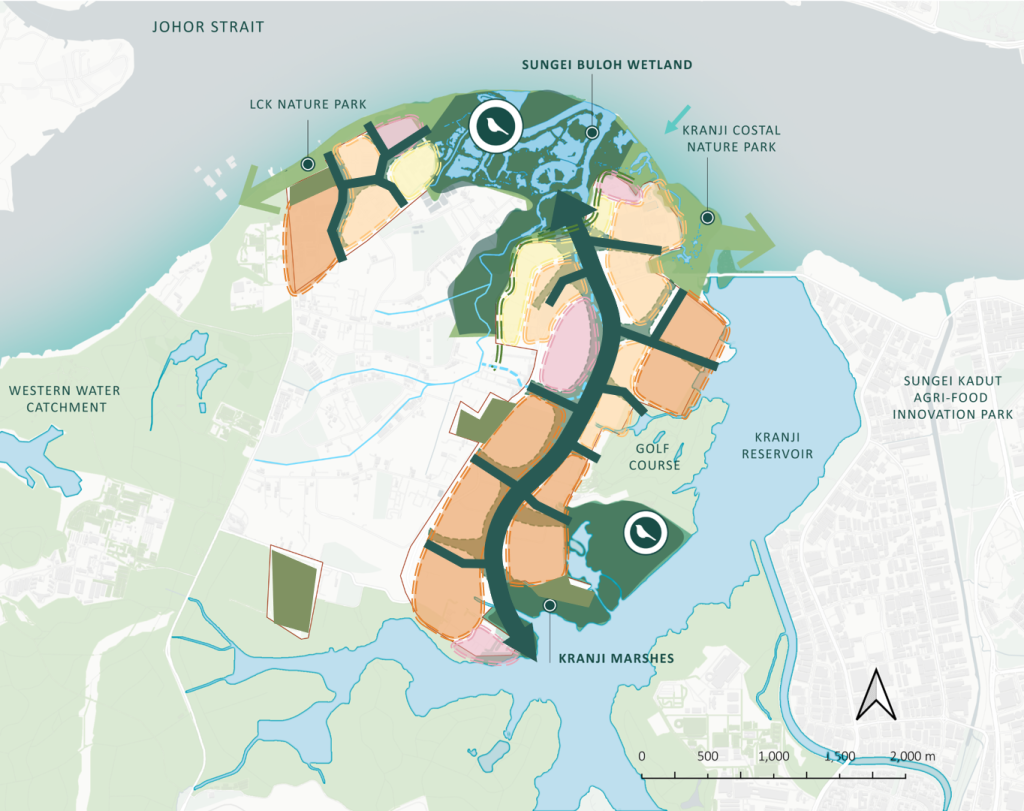
With a focus on lowering carbon emissions, regenerating soil, and restoring ecological biodiversity, our design concept for the Eco-valley mimics the form of vines and branches, connecting the site with surrounding green spaces.
The Eco-valley serves several purposes: 1. Cultivating continuous local habitats and creating a migration corridor for wildlife; 2. Introducing porosity within industrial land, allowing for natural flow and interaction between different areas; 3. Establishing an eco-sensitive agro-forest corridor, blending agricultural practices with natural forest ecosystems.
The Eco-valley divides the site into smaller parts, with each section assigned different functions based on its ecological impacts.
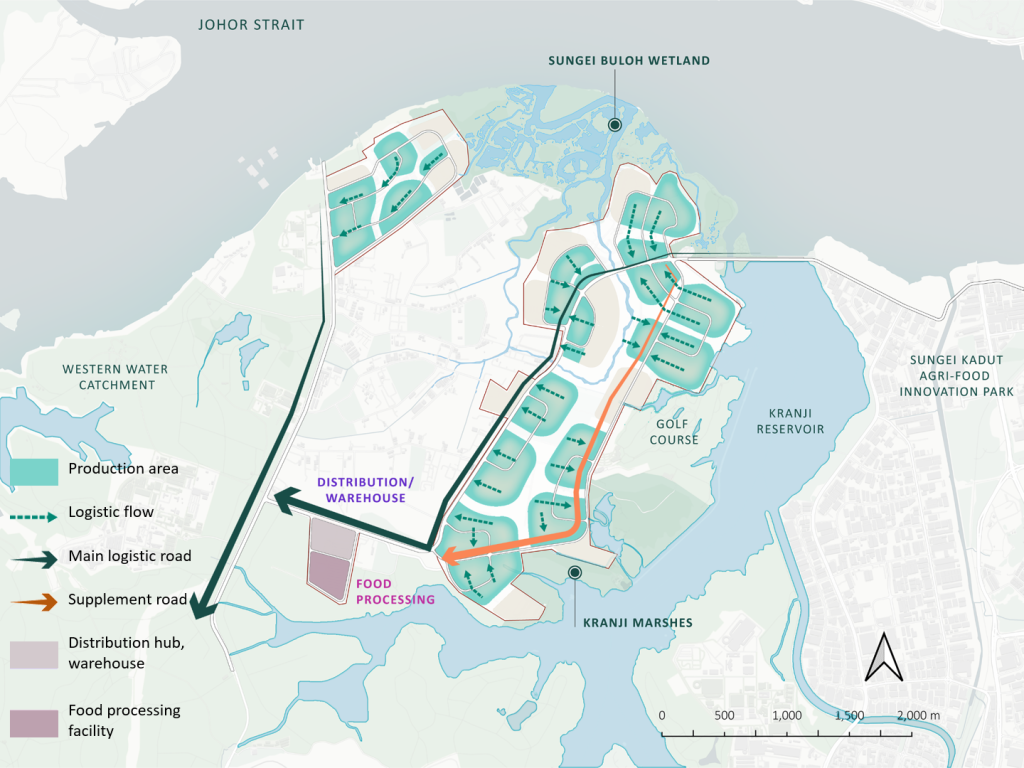
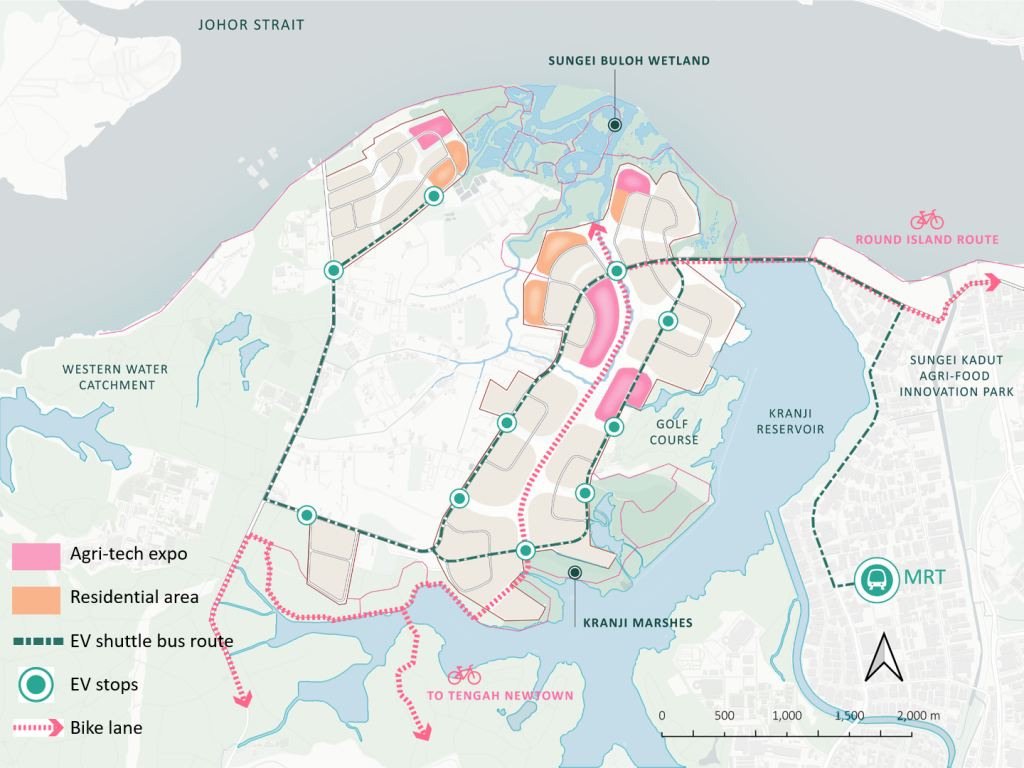
In terms of logistical flow, the designated agricultural production areas are connected by a main logistic road and supplementary logistic roads, both of which lead to the urban centre in the south. These roads facilitate the efficient movement of goods to and from the agri-food hub.
For workers in the agri-food hub, we have designed an electric vehicle (EV) shuttle route that links to a nearby Mass Rapid Transit (MRT) stop. This shuttle service provides a convenient and sustainable transportation option for employees commuting activities.
Along the Eco-valley, a dedicated bike lane is planned to promote active transport. It also provides opportunities for leisurely rides and exposure to the natural surroundings.
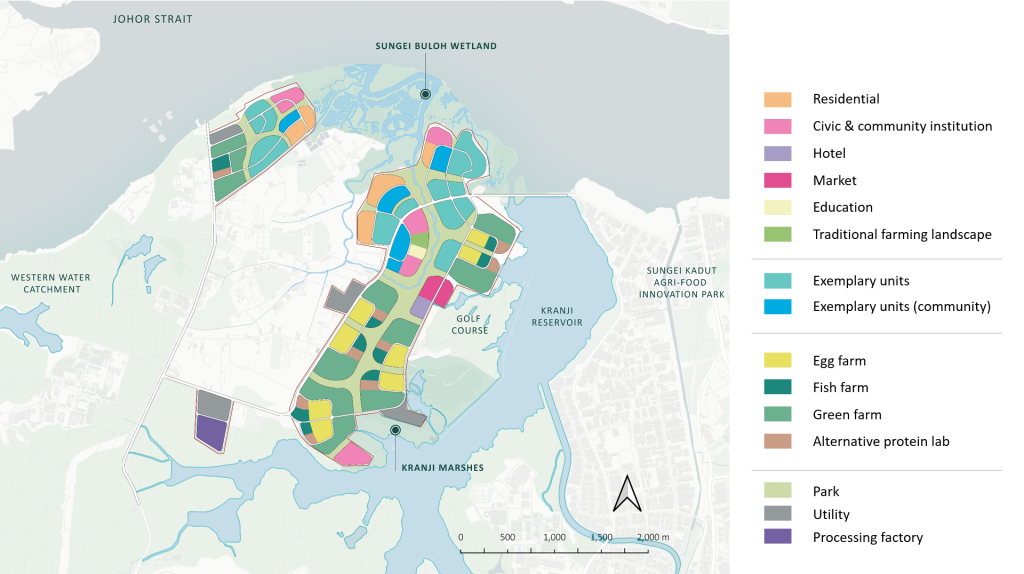
In our master plan, farms comprise 55% of the total area, reflecting our commitment to agricultural productivity. Ecological areas account for approximately 19%, emphasizing our dedication to environmental preservation and biodiversity. The remaining 26% is allocated to other functions, balancing the diverse needs of the site.
Detailed planning strategies
Symbiotic Agro-clusters
We are shifting from a mono-cropping model to an integrated agro-cluster approach, which combines various production processes with specified inputs and outputs. For example, within each cluster, we integrate aquafarming, poultry, and agricultural production. This integration allows for a symbiotic relationship where: The aquafarm supplies nutrient-rich water to the poultry, which in turn provides fertilizer. The aquafarm also offers crop irrigation to the agricultural area, which returns bio-filtered water.
This intensive clustering not only enhances economic and ecological advantages but also optimizes the utilization of resources.
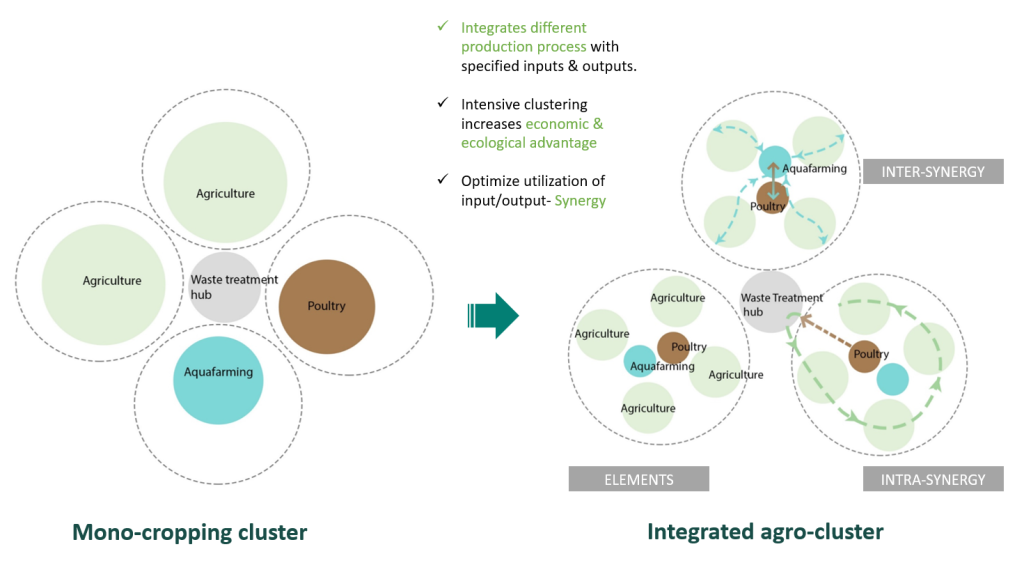
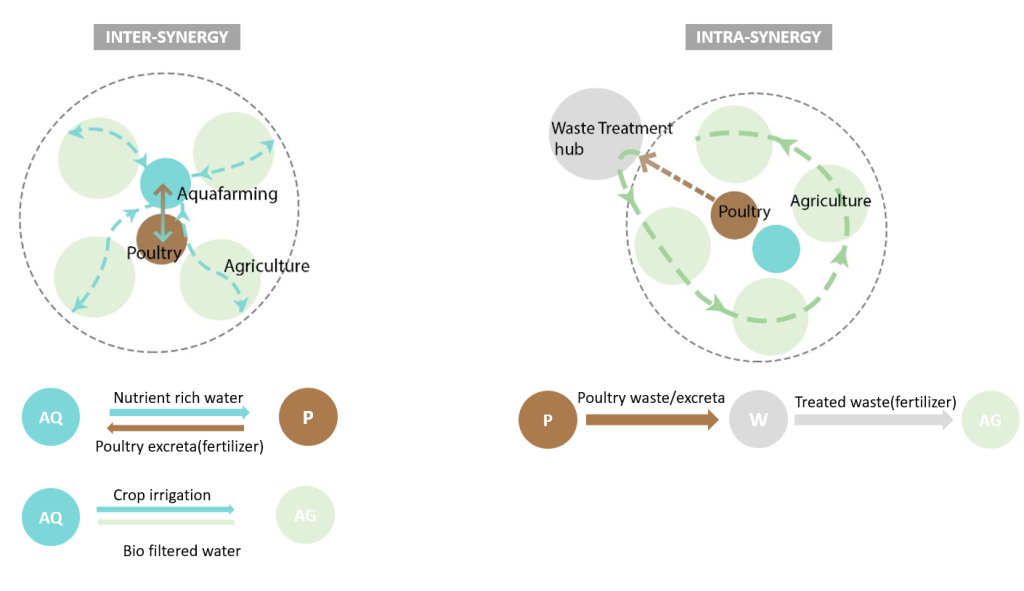
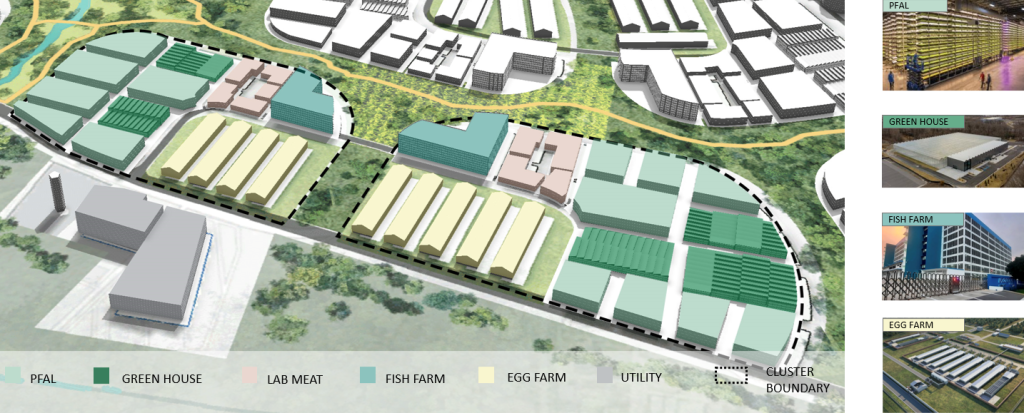
Exemplary Farming Units
We develop two types of Exemplary Farming Units: the Productive-Intensive Unit and the Community-Based Unit. The Productive-Intensive Unit focuses on maximizing agricultural output using advanced techniques and technologies. The Community-Based Unit emphasizes local engagement and sustainability. These units are designed to involve community members in farming activities, promoting local food production and self-sufficiency.
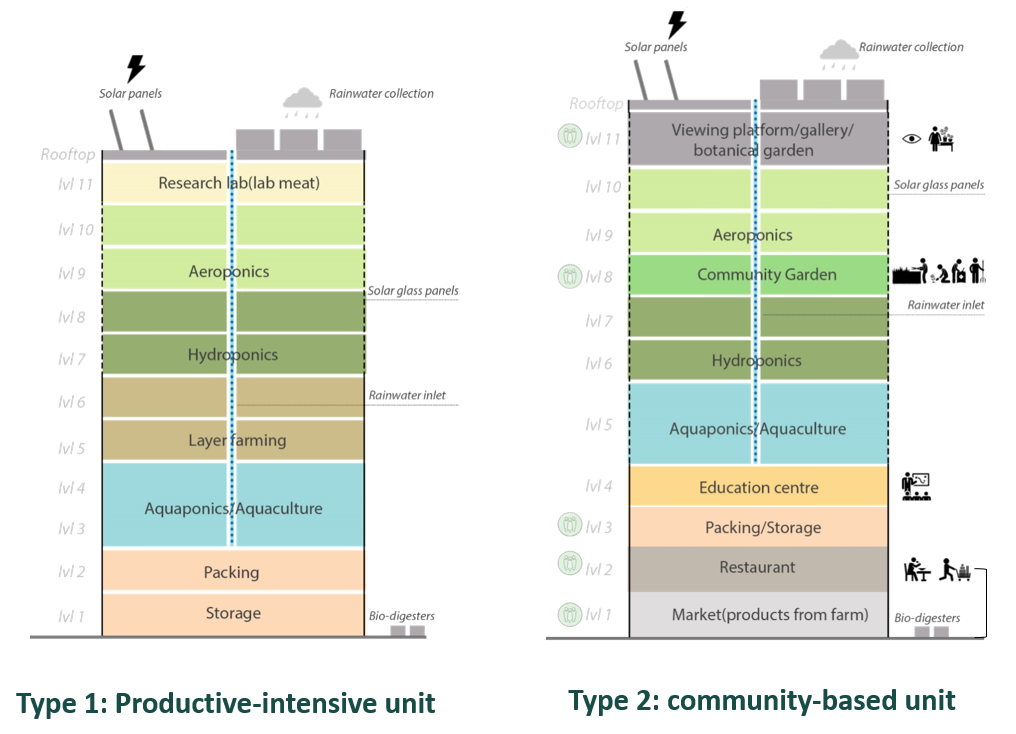
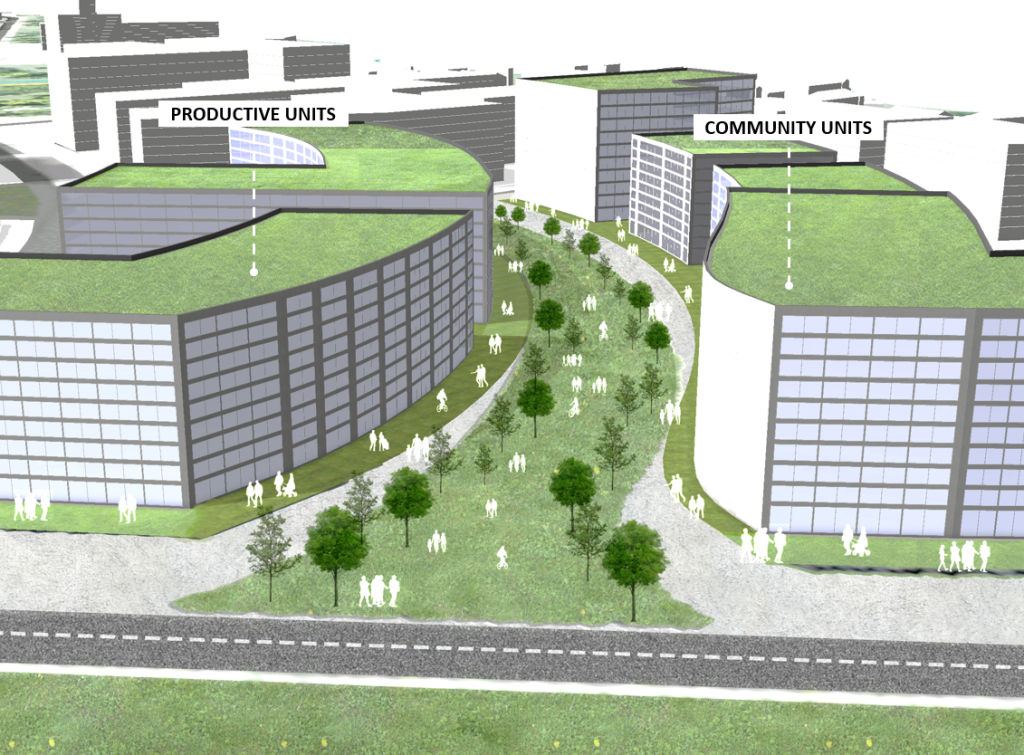
Eco-valley
We designed three key programs for the Eco-valley. First, the Ecological Spine, an eco-sensitive agro-forest corridor that connects Sungei Buloh Wetland and Kranji Marshes. Second, Regenerative Farming optimizes the use of traditional farms with nutrient-rich soil to rejuvenate the environment. Third, we integrate bioswales, which are designed for soil cultivation, irrigation, and leisure.
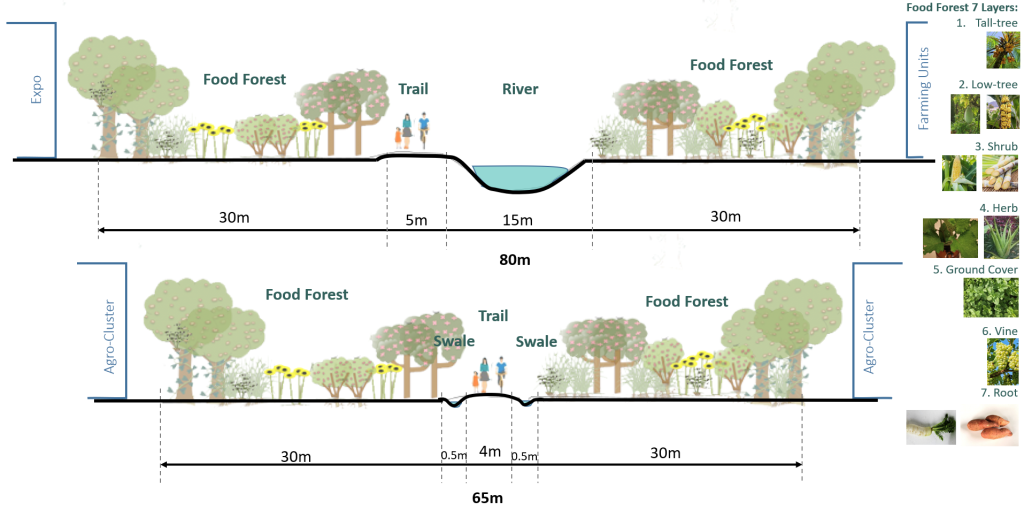
Detailed master plan
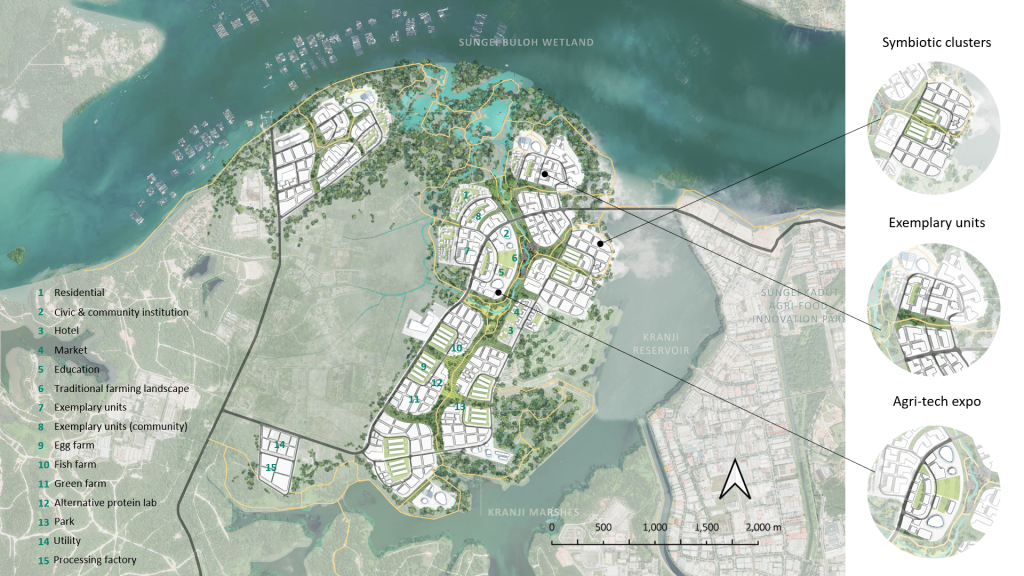
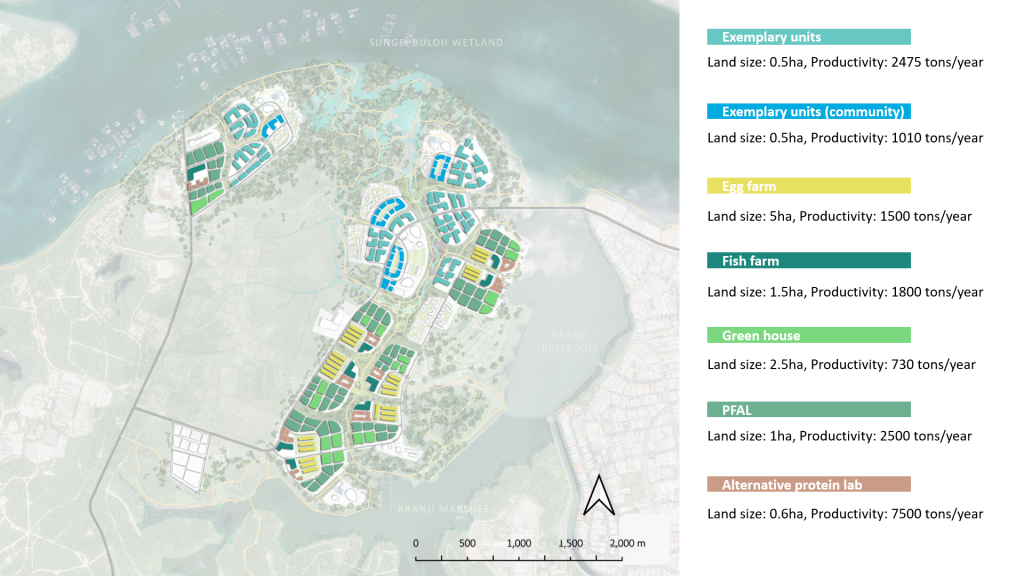
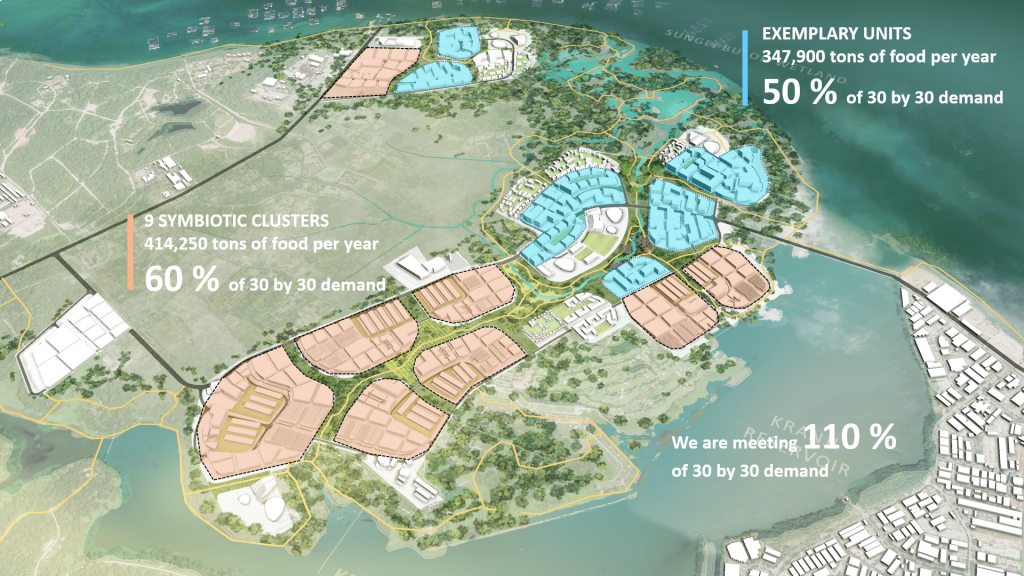
In summary, F.A.R.M has the potential to meet 30% of our nutritional needs, with 40% from fruits and vegetables and another 40% from protein sources. Additionally, F.A.R.M is estimated to reduce carbon emissions by 5-10% compared to current agricultural practices.
This is part of a group project, made possible by the collaboration with Athira Radhakrishnan, Bingling Chen, and Robin Alviedo.